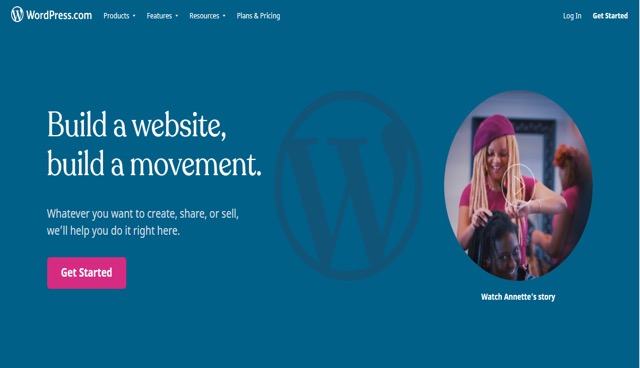Most people know WordPress as WordPress.org – the popular open source content management system.
However; most people don’t know that WordPress is built on top of WordPress.org. Therefore, they are not exactly the same thing.
Knowing the difference between the two is the key.
WordPress.com
WordPress.com has a very obvious different user interface from WordPress.org. It’s more in line with what you will expect to find in a website builder.
WordPress.org is a CMS. While it is very powerful, it has a steeper learning curve.
WordPress.com is easier to use and simpler.
Interface
Website builders are similar to WordPress.com but unlike most other website builders WordPress.com is not a drag-and-drop visual editor. Instead it’s a form based editor that separates the content of the pages from the design.
Parts of WordPress.com feel like they are there as a result of being built on WordPress rather than thinking about what’s best for users. There is too much that WordPress throws at a user in the theme customization menu. Menus include a variety of options, you can swap menus for menus, chose different menus for different locations. This level of abstraction is too confusing for many people. This is one of the features that has been inherited by WordPress.com from WordPress rather than designing from ground up to be intuitive.
Themes
There are 294 themes to choose from in WordPress.com. This is a wide selection. Themes ranging in quality and features but they are all responsive. Some are fresh and contemporary and others feel a bit outdated. But in such a wide range you should be able to find one that suits your needs.
Features
Two most compelling reasons to use WordPress.com are:
- Plugins
Over the last decade WordPress has developed an impressive ecosystem of 3rd party plugins and it allows you to install any of those plugins if you are on the most expensive of the plans. These plugins extend functionality dramatically. You can install buddypress which is a popular WordPress membership system. Or you can install Give – a 3rd party donations plugin. It includes donor management and powerful donation forms that have suggested amounts, goal matching and more.
In order to configure any plugin you have to leave behind the friendly WordPress.com interface and enter WP Admin. WP Admin is the unfriendly interface for WordPress. Avoiding this interface was the reason WordPress.com was designed with a different interface from the start.
- Blogging
WordPress.com has the same excellent blogging features that WordPress has. You have tags, drafts, automatic post sharing, custom permalinks, automatically set featured images based on the first image of the post and more. You can even add a team of writers that can all contribute to a blog.
This is the WordPress.com interface.
This is the WordPress interface.
WordPress.com is the best platform in the blogging sphere. It’s only competitor might be Squarespace.
The moment you leave the WordPress.com interface and enter into WP Admin interface your learning curve gets steeper. Even editing common features like forms needs you to configure it in WP-Admin.
Who is WordPress.com for?
It is a very helpful website for two particular types of users.
- Bloggers
- People already familiar with WordPress
In the end, WordPress.com is a product that is built on compromise. It tries to simplify WordPress while also giving users the option to leverage the power of WordPress plugins.

